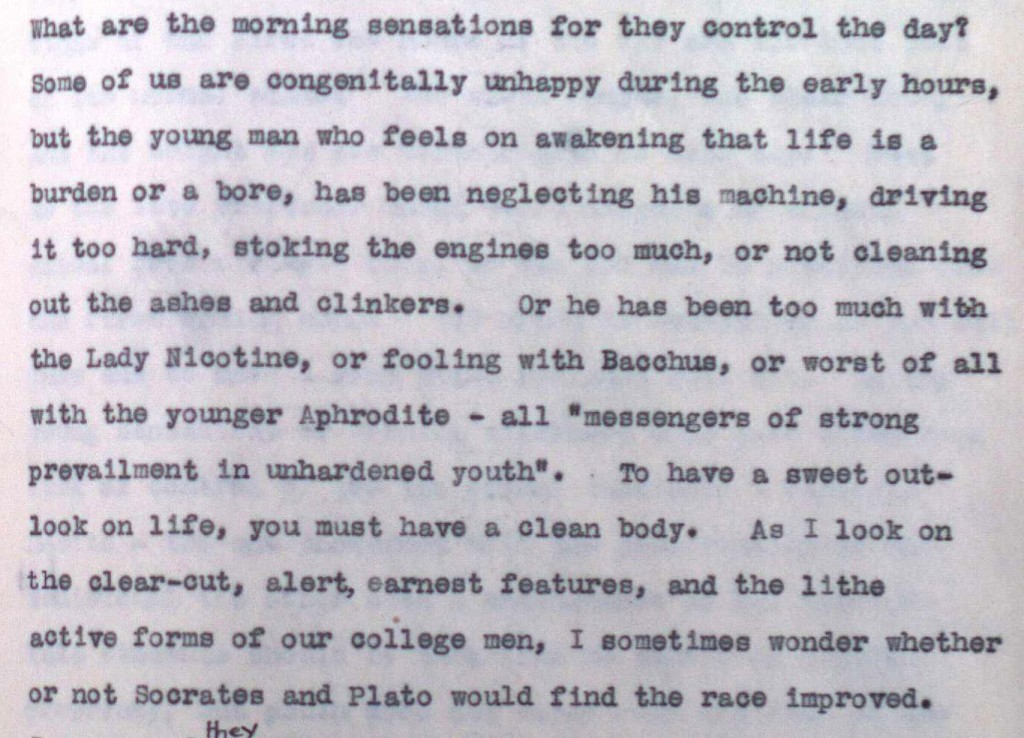Today seems a fitting day to take a look at an oldie-but-goodie from the Osler Library Newsletter, no. 15, February 1974.
An article by then-cataloguer Janis Shore describes an exhibit on the history of smoking:
Prompted by a suggestion from one of our overseas correspondents, the Library staff organized an exhibit on the history of smoking. There was little problem in finding sufficient materials within the Library as Dr. Osler expressed great interest in the use of tobacco and selected 30 books for the Osleriana collection that dealt with this subject.
One sixteenth-century book in particular was responsible for much of what Europeans knew about tobacco.

Monardes, Nicolás, ca. 1512-1588. Historia medicinal. En Seuilla : En casa de Alonso Escriuano, 1574. 4º. Osler Library, B.O. 3431.
Written by Nicolas Monardes in 1574 and titled ‘Primera y segunda y tercera Partes de la Historia medicinal de las cosas’, it states that the tobacco plant would cure coughs, asthma, headache, cramp in the stomach, gout… and malignant tumours.
Another book, ‘A Counterblaste to Tobacco’ issued by King James I of England, represents one of the earliest stop-smoking campaigns, highlighting an important premodern reason to quit.
Many monarchs were as concerned as King James because smoking had drastically increased the hazards of fire and hundreds of European villages were being destroyed because of careless smokers.

Reader’s annotation in a 1644 compendium including a Latin translation of James’s Counterblaste, among other works. Osler Library, B.O. 2550. “Tobacco! Injurious herb, an oily plant with horrible smoke.”
William Osler himself recognized certain dangers related to over-indulgence in tobacco and warned against it (though he was far from a non-smoker himself).

Lady Nicotine in William Osler’s speech “A Way of Life”, 1913. Typed manuscript, Osler Library, B.O. 7653.
Read the whole article here.
To check out other issues of the OLN, see our website.
 The latest issue of the Osler Libary Newsletter can now be found in electronic form on our website. Articles from no. 119 include a look at how Renaissance doctors predicted the future, a comparison of William Osler and Norman Bethune’s religious heritages, an investigation into our collection of smallpox vaccination literature, and a history of Wilder Penfield’s famous homunculus.
The latest issue of the Osler Libary Newsletter can now be found in electronic form on our website. Articles from no. 119 include a look at how Renaissance doctors predicted the future, a comparison of William Osler and Norman Bethune’s religious heritages, an investigation into our collection of smallpox vaccination literature, and a history of Wilder Penfield’s famous homunculus.




